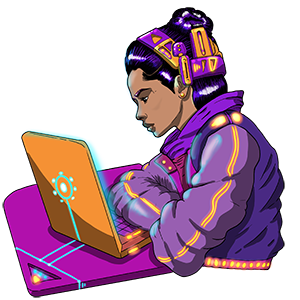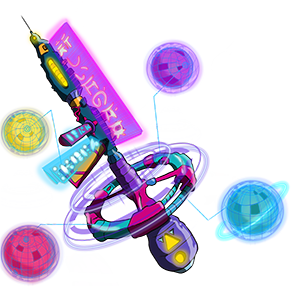As we continue our blog series on building resilient multicultural teams for the future of work, we’d like to pose a few important questions: Are you dedicating time and resources to optimizing your processes with AI-driven solutions? If the answer is “yes”, is this a reaction to the current global context, or was it planned? Are you genuinely aiming to become more efficient or are your clients demanding that you implement these technologies, leaving you no choice but to adapt?
Don’t worry, we’re all in the same boat, navigating turbulent waters.

However, achieving lasting improvements requires more than just focusing on speeding up processes. Efficiency isn’t merely about accelerating workflows; it’s about optimizing them, refining them, and enhancing the entire user experience for everyone involved, while maintaining a healthy team environment. Without that, efficiency isn’t sustainable.
In this post, we will be sharing some of our strategies and recommendations for achieving this balance, from involving the entire team in optimization processes to distributing responsibilities effectively.
The Continuous Improvement Mindset
You’ve probably heard the phrase, “If it ain’t broke, don’t fix it.” While this mindset can limit unnecessary changes and investments, it can also hinder progress and innovation. Even if your team is performing well, maintaining a continuous improvement mindset is crucial. Here are some recommendations:
Involve the Entire Team
Are you working with a large and diverse group of professionals but leaving all innovation and development to a select group of managers? Why not leverage the size and diversity of your team? When everyone is involved in optimizing your team’s efficiency, it creates a culture of continuous improvement, and the brightest ideas can come from places you never would have imagined. Here are a few tips to get started:
- Inclusive Facilitation Techniques: At your team meetings, include a moment to brainstorm or brainwrite ways to improve workflows and processes. Break the status quo! But remember, to encourage every team member to participate and share their ideas and suggestions, you must read the room. Not everyone feels comfortable sharing their thoughts publicly. Fortunately, there are many techniques and practices to help foster creativity, ideation, and innovation within teams that do not necessarily require people to be in the spotlight. Identify what can work within your organization. Here are some of our favorite approaches: Nominal Group Technique, Six Thinking Hats, Prototyping, Sketchnoting.

- User Acceptance Testing (UAT) and feedback rounds: A best practice, borrowed from the Software Development Life Cycle, is the User Acceptance Testing (UAT) stage. Before formally implementing the optimized workflow, test it with the end users. This test stage will generate valuable feedback that can be acted upon before the official launch. Once changes have been implemented, allow additional feedback rounds to report any bottlenecks or unforeseen inefficiencies.
- Cross-Functional Collaboration: Promote collaboration across different functions and departments such as marketing, sales, engineering, and production. This diversity brings a wide range of skills and viewpoints, fostering creative solutions and comprehensive strategies. When team members understand each other’s roles and challenges, they can work together more efficiently.
Distribute Responsibilities and Promote Ownership
Efficiency is best achieved when responsibilities are well-distributed and team members feel a sense of ownership over their tasks. When each member knows their role and is empowered to take initiative, the entire team operates more smoothly and productively.
This is how we did it:
- Champion Initiative: The Champion Initiative is a strategy designed to enhance how we gather, share, and manage knowledge within our team. We began by recruiting champions—team members who have mastered specific topics, processes, or tools—to drive deep learning and spread their expertise efficiently. These champions put in the effort to become the go-to experts, offering accurate and detailed insights. They created tutorial videos and step-by-step guides that focus on the key information the team needs. This approach saves hundreds of hours in training, research, and communication by centralizing expertise and making resources easily accessible.

- Ownership and Accountability: We assigned clear responsibilities and ensured that each team member knew exactly what they were accountable for. This clarity fostered a strong sense of ownership, encouraging everyone to take initiative. For example, to address specific challenges, we formed specialized groups, such as Time Masters, who monitored daily tasks and testing, News Masters, who shared important updates with the entire team, and Hotfix Coordinators, who managed last-minute hotfixes to prevent overwriting changes. By clearly defining roles and expectations and creating these specialized groups, team members felt more invested in their work and motivated to contribute to the team’s success.
- Empower Decision-Making: Empowering team members to make decisions within their areas of responsibility is key to reducing bottlenecks and accelerating processes. We believe in giving every team and team coordinator the autonomy to decide what works best for them. They are the experts in their domains, intimately familiar with the processes they manage. As leaders, our role is to facilitate and support rather than obstruct.
Utilize Technology, Safeguard Information and Track Metrics
Coming back to our initial question about leveraging new technology to our advantage, it’s undeniable that embracing technological advancements allows teams to streamline workflows, enhance collaboration, and swiftly adapt to changing demands. This adaptability is central to futureproofing our teams. But how do we ensure the changes we implement will have a lasting and positive impact?

- Choose the Right Tools: When selecting new tools, prioritize their ability to enhance collaboration. In today’s remote and distributed work context, it’s crucial to choose solutions that facilitate seamless sharing among team members. Identify tools that fit your team’s needs. If existing tools fall short, consider developing custom software, apps, or systems tailored to your team’s unique workflows. For example, we created a task tracker tailored to our team’s needs, which has evolved through four versions over time. Each iteration has enhanced the tool’s agility and comprehensiveness, making it a more robust solution.
- Information is Your Most Valuable Asset: Avoid scattering data across multiple tools or maintaining disparate records of the same information, especially if they aren’t regularly updated. Centralize data to ensure that all team members have access to a single source of truth. This reduces the time spent searching for information, minimizes errors, and maintains data integrity.
- Track Key Metrics: Merely tracking data is not enough. Use it strategically. Identify and monitor critical performance indicators such as project completion times, error rates, and customer satisfaction scores. Regularly review these metrics to drive informed decision-making and continuous process improvements.
Takeaway: A Collaborative Effort
Efficiency is not a one-time achievement but a continuous journey. By involving the entire team, distributing responsibilities, utilizing technology, and tracking key metrics, you can create workflows that are not only efficient but also supportive of a positive team dynamic. We hope these strategies inspire you to reflect on your current practices and explore new ways to optimize your team’s activities.
About the author:

Angie Tapia is a professional in translation, localization, project management and language services. She holds a Bachelor of Arts in Translation and Interpreting and a Master’s in Administration and Project Management. Her career includes a pivotal role as the Head of Language Services at the Lima 2019 Pan American and Parapan American Games, where she led a team of 50 language services professionals and over 300 volunteers, providing over five million translated words and a thousand hours of interpreting. Angie’s work extends to academia, where she has served as a university professor since 2015. Currently, she channels her passion for innovation, technology and localization into her position as a Customer Success Manager at Terra Localizations, where she tailors solutions and streamlines processes for the videogame industry.
